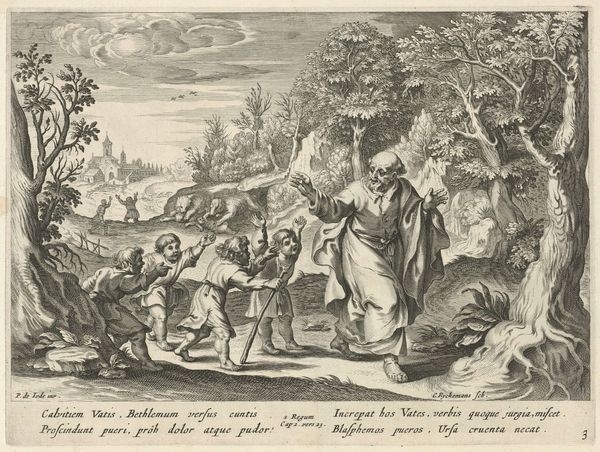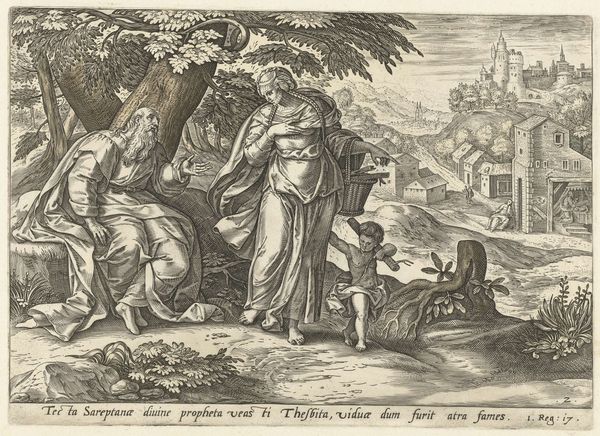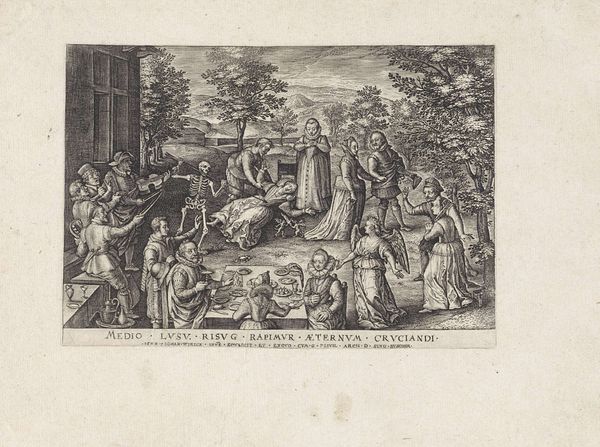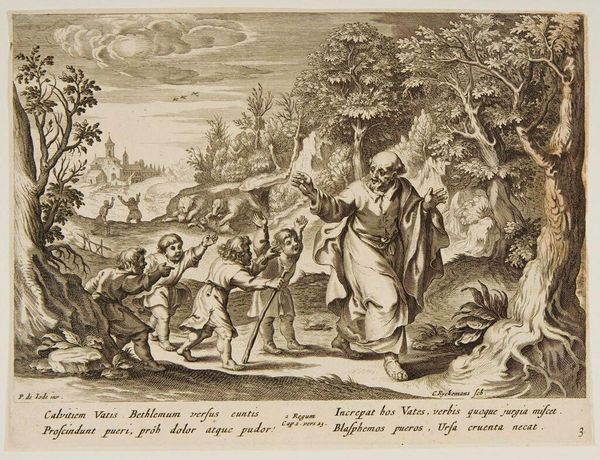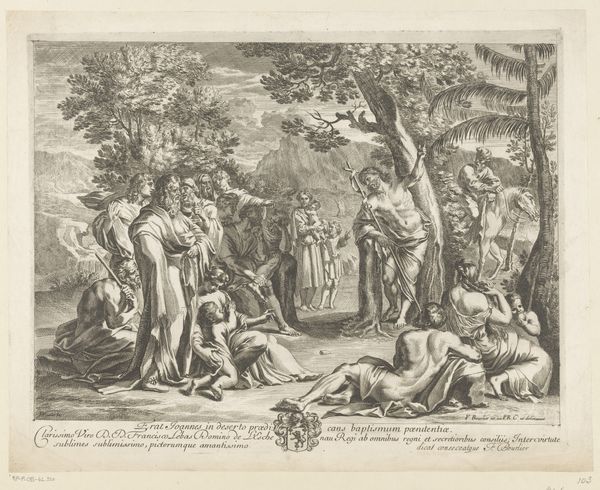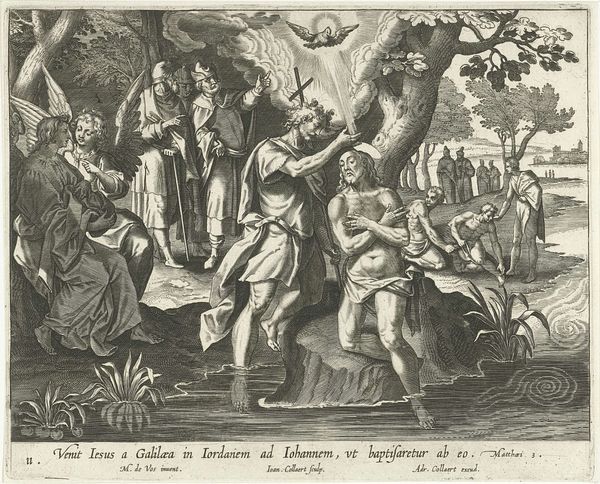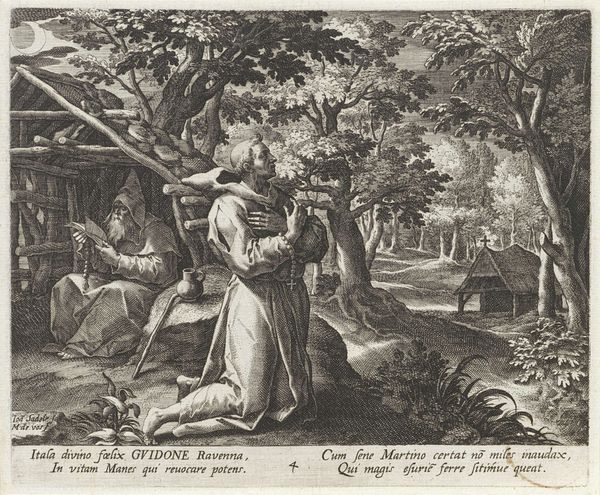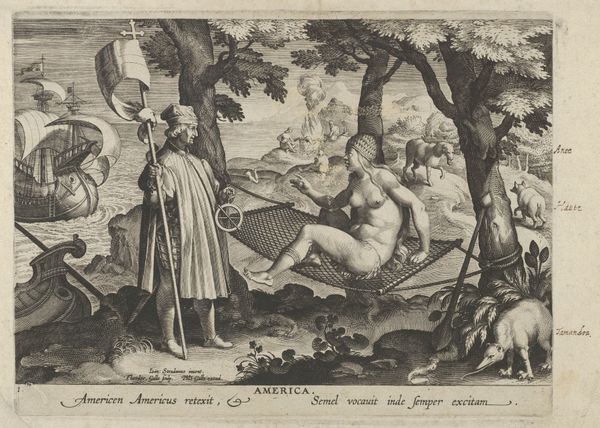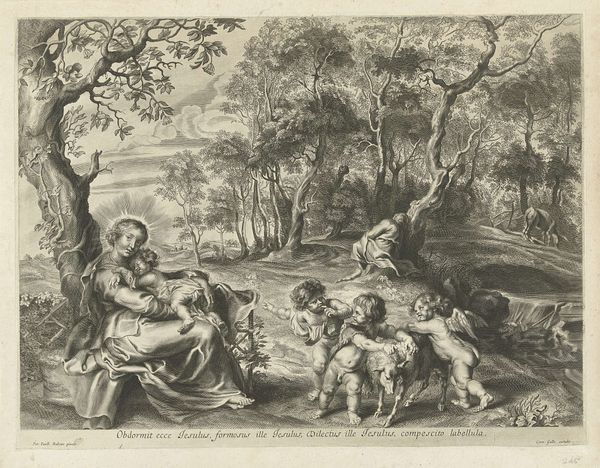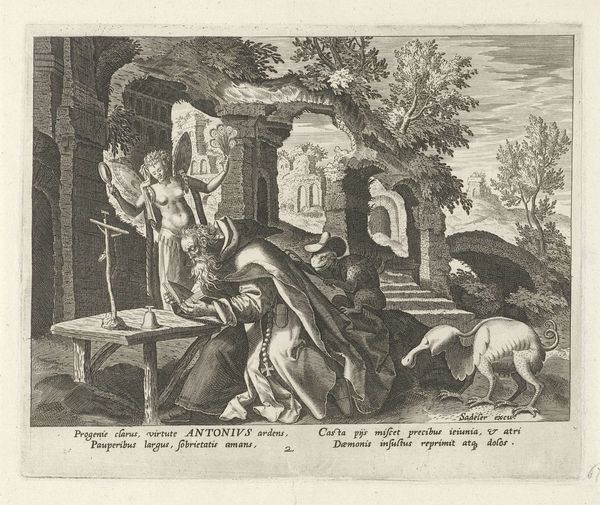
print, engraving
#
baroque
# print
#
pen illustration
#
pen sketch
#
old engraving style
#
figuration
#
line
#
history-painting
#
engraving
Dimensions: height 150 mm, width 166 mm
Copyright: Rijks Museum: Open Domain
Curator: This engraving by Albert Schut, made sometime between 1708 and 1713, depicts "Germanen aanbidden één van hun goden" – Germans worshipping one of their gods. What’s your initial reaction? Editor: Somber. Even in the black and white medium, a sense of intense ceremony hangs heavy. The central figures seem bowed not so much in reverence, but in submission. Curator: The composition certainly contributes to that feeling. Note how Schut utilizes a strict horizontal arrangement, anchoring the chaotic cluster of figures at eye-level, while using precise hatching and stippling to indicate the depth of the scene. He also draws our eye with this stark, expressive line that focuses the subject and allows negative space to define his volumes, specifically with this central worshipper prostrate on the ground. Editor: It reads as highly problematic given its depiction of religious ritual! We see figures positioned as authoritative intermediaries, and other people entirely surrendering their bodily autonomy on the ground. And look at the expressions, their submissive affect… Curator: Affect, indeed. I see those expressions heightened by Schut's rendering technique. This intense drama and pronounced emotion mark the work as being aligned with the late Baroque sensibility. It builds on line techniques, where shape is simplified in favor of maximizing expression. See the way their garments billow and swirl, creating movement even within stillness? Editor: Exactly, this aesthetic amplifies what can only be read as propaganda here. Whose god are they really venerating? In early 18th-century Europe, images such as these would contribute to the historical narrative constructed by dominant religious and political forces of the time, specifically painting Indigenous rituals and beliefs as barbaric and chaotic when set against contemporary European worship and ways of life. Curator: So the visual language itself – the dramatic lighting, the emotive figures, and the detailed linework - it's all complicit in shaping that perception? It's less about documenting a scene and more about reinforcing a particular worldview? Editor: Precisely! And recognizing this interplay lets us view Schut’s formal rendering with necessary scrutiny and unpack the deeper implications this image had within its historical context. Curator: Thanks. Seeing that the artist is always imbedded within this worldview and using their own techniques makes me consider how the work participates in shaping historical and social realities. Editor: It's a crucial point, prompting us to constantly investigate visual histories.
Comments
No comments
Be the first to comment and join the conversation on the ultimate creative platform.
